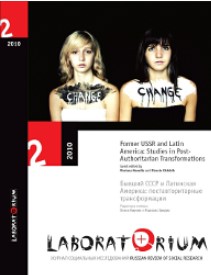MAKING “THE PEOPLE”: POLITICAL IMAGINARIES AND THE MATERIALITY OF BARRICADES IN MEXICO AND LATVIA
MAKING “THE PEOPLE”: POLITICAL IMAGINARIES AND THE MATERIALITY OF BARRICADES IN MEXICO AND LATVIA
Author(s): Dace Dzenovska, Iván ArenasSubject(s): Political history, Security and defense, Politics and society, Sociology of Politics, Politics and Identity, Identity of Collectives
Published by: Центр независимых социологических исследований (ЦНСИ)
Keywords: Mexico; Latvia; El pueblo; tauta; barricades; Oaxaca; Riga;
Summary/Abstract: In 2006, improvised barricades went up in the Mexican city of Oaxaca to defend the city’s residents and members of the Popular Assembly of the Peoples of Oaxaca from paramilitary incursions and police repression. Composed of everything from appropriated buses to nails, sticks and string, and organized and protected by housewives and young kids from urban crews, the Oaxacan barricades cultivated an intimate and effervescent sociality of el pueblo (the people). Fifteen years earlier, in 1991, the Latvian tauta (the people or Volk) also constructed barricades in the streets of Rīga to shield themselves and important landmarks from Soviet military units. Like the barricades in Oaxaca, those in Rīga cultivated an intimate sociality of the people. Both were also made possible by and gave rise to historically specific political imaginaries and collective identities.
Journal: Laboratorium. Журнал социальных исследований
- Issue Year: 2/2010
- Issue No: 2
- Page Range: 179-199
- Page Count: 21
- Language: English

